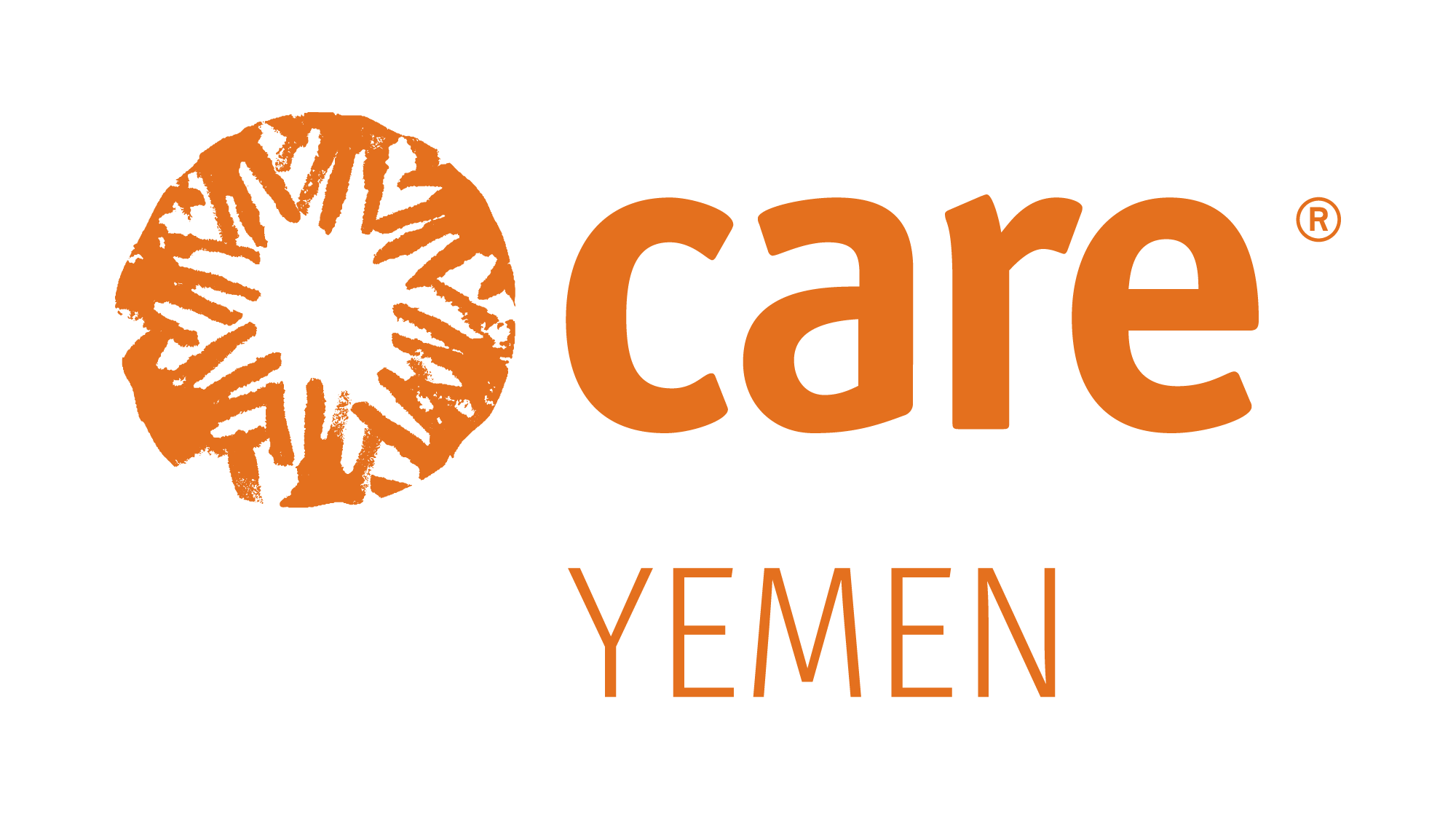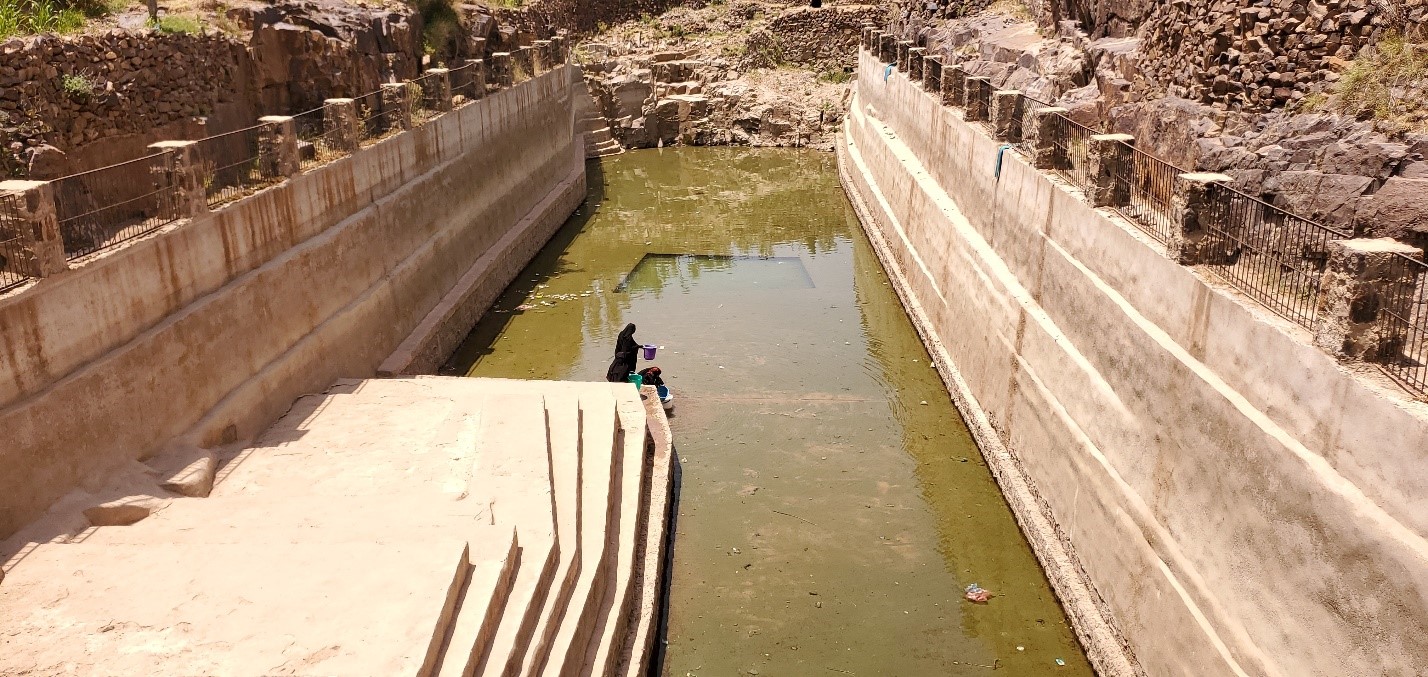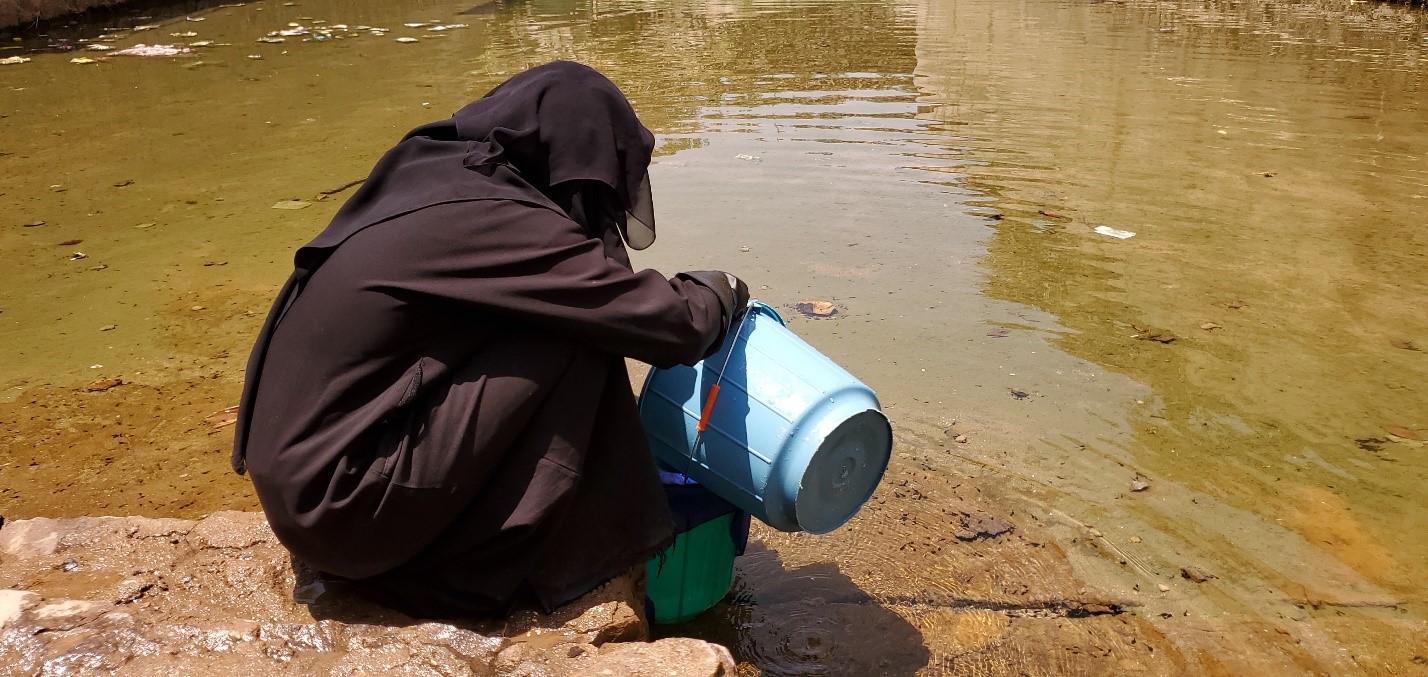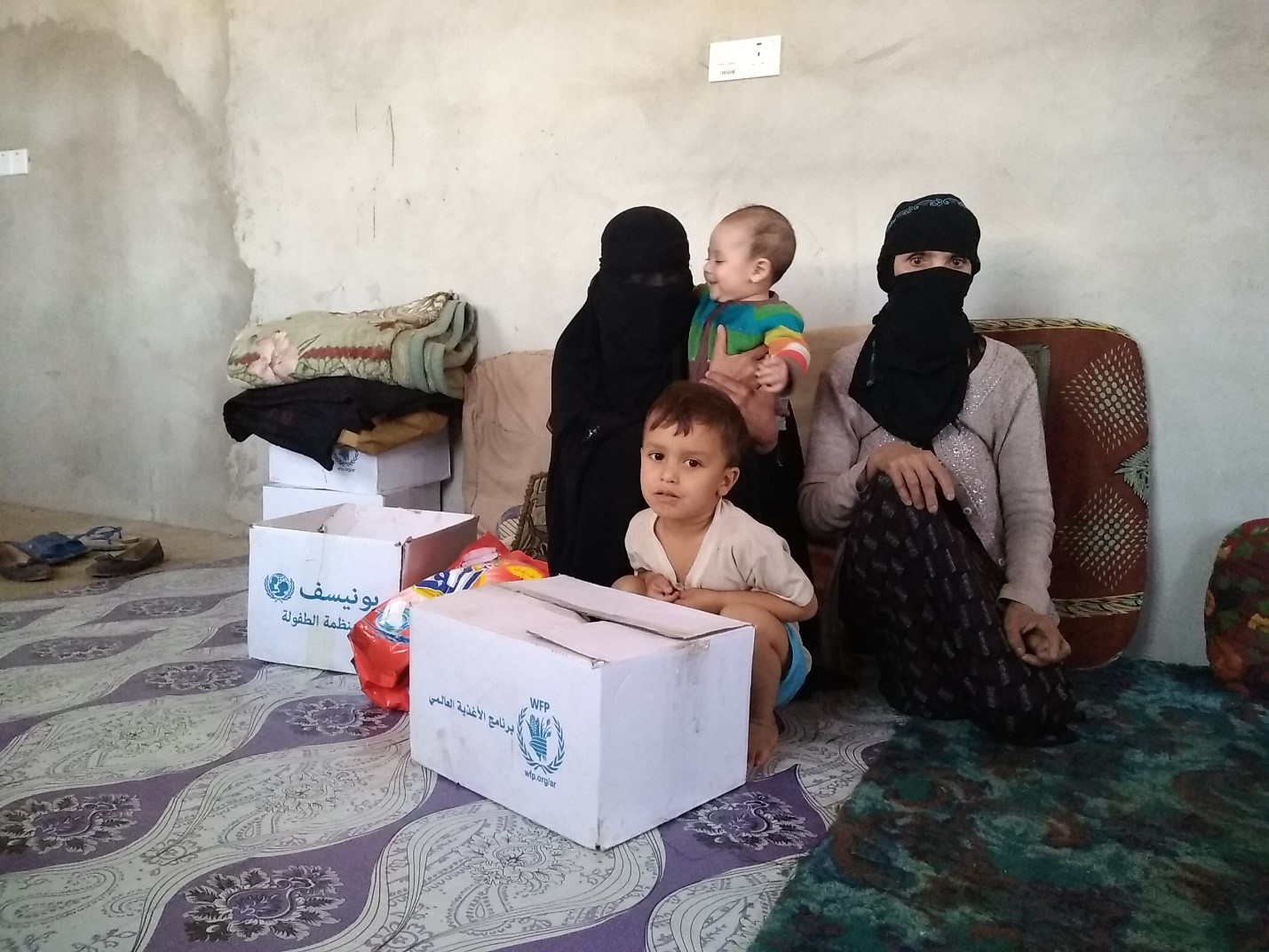In war-torn Yemen, 20.5 million people need humanitarian assistance to access safe water, sanitation and hygiene (WASH) provisions, of whom 11.2 million are in acute need and require life-saving assistance. Displaced populations and marginalised groups are the most affected. Lack of access to safe water, sanitation and hygiene is a major risk factor for poor health, resulting in high mortality rates. Yemenis are increasingly and severely affected by preventable WASH-related diseases.
Almadan village of Amran governorate is one of many villages across the country that were left to face WASH and health risks. Like most Yemenis, residents of Almadan depend on a rainwater pond as their sole source of water. The pond fills up over the summer and residents use it for drinking, cleaning and washing. Women and children walk long distances to collect potable water in water cans, carrying them on their heads all the way home.





